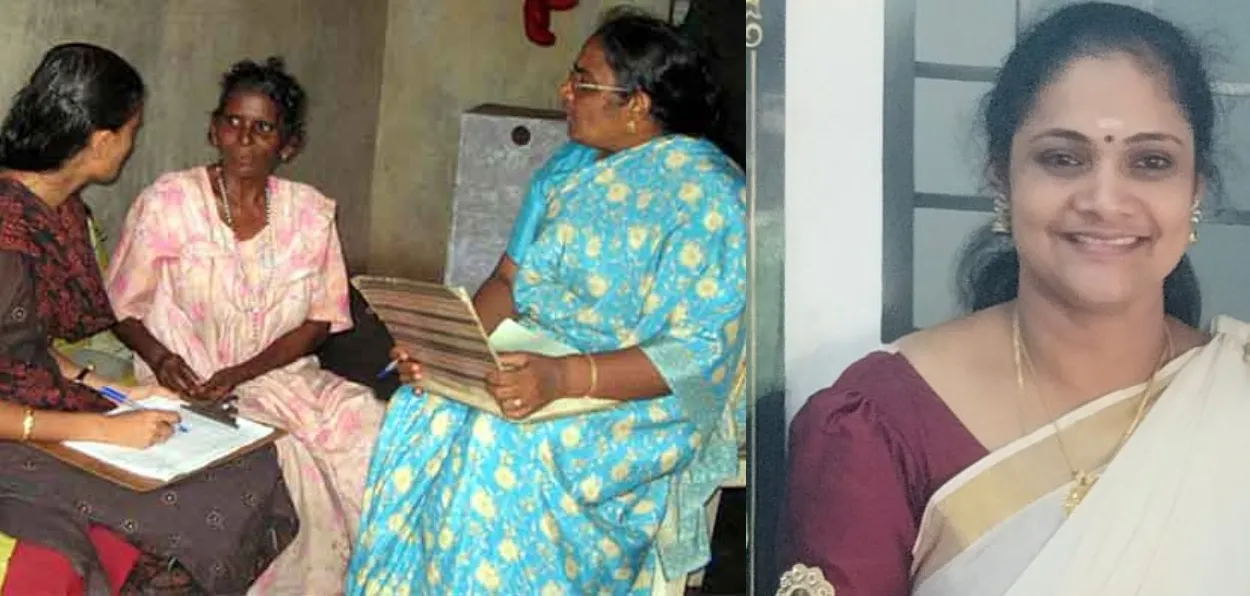
Sreelatha Menon/Thrissur
Palliative nurses are made of another metal. Their work makes them different from hospital-based nurses. ``We visit homes and meet the patients mostly bed-ridden or terminally ill where they are in situ. We don’t meet them in hospitals like other nurses.
“Many times we find them in the store room (work area) of the house or the back yard as the family may have confined them there to prevent their stench from spreading,” says Selvy one of the thousand odd palliative nurses hired on contract under the programme in 2013.
“We go to houses where they don’t have a chair to offer to us or without a pipe to wash our hands. We also go to air-conditioned houses. Sometimes we find them abandoned with no one willing to take care of them. Whatever the condition, meeting the patient in their situation affects you deeply,” says Selvi with a decade of experience.
In palliative care, there is no distinction between APL and BPL, unlike government programs which divide beneficiaries based on income.
"When I go to a patient, I become part of their story, their life,” says Selvi who is with the Mulangunnathukavu Health Center. “Once I went to a dialysis patient. The man needed three dialysis a week each costing Rs 2000. The wife was struggling to raise money. The wife had gone to raise money from different sources for the next day’s dialysis. The man was once working in the Gulf. But his medical expenses had made them paupers. That evening I reached out to people I knew in palliative care and together we raised Rs 6000 and sent it to the wife’s account…” she recalled.
“The panchayat provides us with five lakh rupees for palliative care for a year. But even if we buy dialysis kits for a lakh, and we have 31 dialysis patients, the money gets over very fast.
Usually, it is the well-to-do who are more demanding when it comes to free resources, medicines, and kits, while the poor ones keep quiet if we tell them that funds are exhausted,’’ says another nurse.
Wheelchairs, medicines, water beds, and air beds are among the things given to bedridden patients.
“While we as nurses feel a connection with these patients, it is a mutual feeling. They wait eagerly for our next visit and keep count of the days. If we delay even by a day, they tell us. I wouldn’t pay attention to my appearance, but they would tell me if my hair had grown thinner or if I had lost weight or color. Some people have waited for me to die. After meeting them I heard the next morning that the patient passed away at night.
“It is as if they were waiting for that last meeting with me..I feel blessed when such things happen. I sometimes tell myself that I don’t have to worry about my death. When I die there will be many people to receive me on the other side…All palliative nurses feel that grace, that blessing...In any case, the connection made with the patients is something we can never have in hospitals,”
Says Selvy who is just back home after a day of many house visits and is now getting ready for her wedding anniversary celebration. The family is going to a movie. It brings a smile to her face amidst the gloomy patient stories she recalls.
Palliative care has a three-tier structure and is led at the primary level by the palliative nurse and doctor at the primary health center level. “There is one nurse for every 30000 population,” says Dr Mathews who is the zonal head of the palliative care programme.
At the secondary level the specialists at the community health centre step in with extra visits for special complicated cases. The third tier is tertiary care at the district hospital through admission to the palliative care unit.
ALSO READ: In Kerala people suffering incurable pain are not left alone
Selvy has registered 110 patients for home care in the 14 wards under her. These include dialysis patients, people who are partially paralyzed, and people who need dressing for bed sores, people whose catheters have to be changed…In many cases, the family members are trained to do many of the procedures, but the visits continue based on the needs of the patient.
